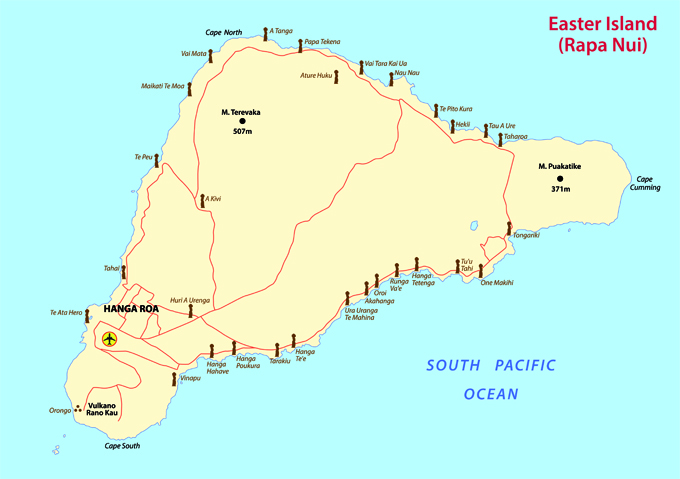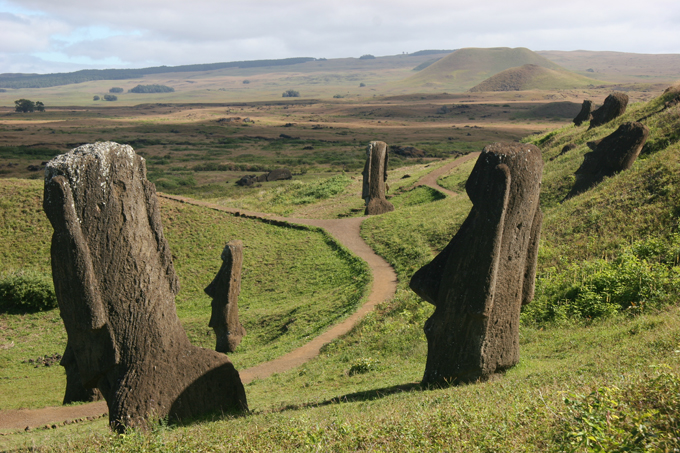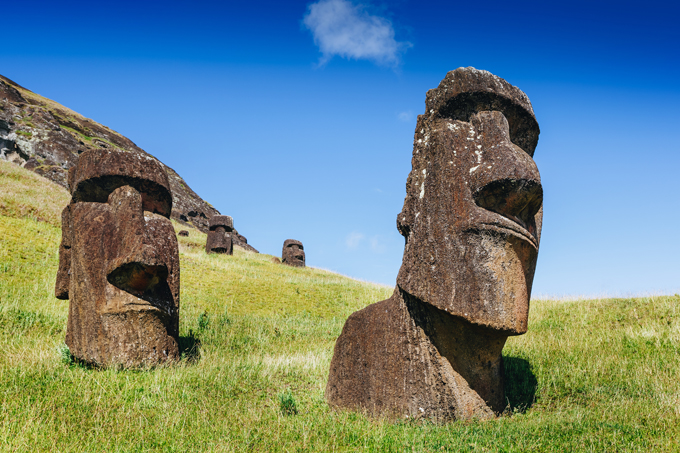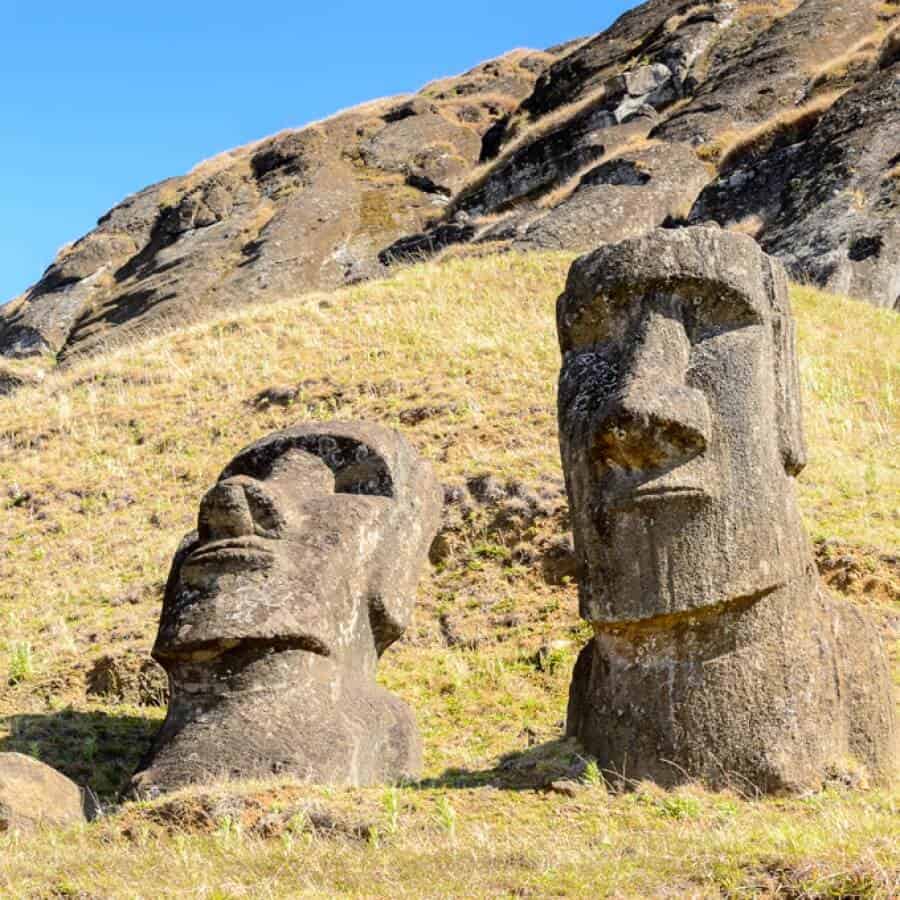It is the one of remotest inhabited islands in the world. The local name is Rapa Nui, and it includes more than 900 gigantic statues created by the early Rapa Nui people and still survive. If it still doesn´t sound familiar, see how Easter Island sounds. To what it owes its name is more prosaic than would be expected.

So what was it with the name of the Easter Island? Jacob Roggeveen, the Dutch admiral and explorer reached the island in 1722 and because it was Easter Sunday, he called it Easter Island.

Moai statues
The triangle shaped island with an area of 163 km² and a length of 24 km was already populated in 700 – 1100 AD. Nevertheless, it was again human activity that eventually led to the weakening of the original population from 15 000 in 17th century to 111 in 19th century.

Moai statues
The meaning behind the distinguished look of Moai statues, which are the main characteristic of the island, is not clearly known. Archeologists think that they symbolise authority, power and have religious and political connotations. Apart from that the busts were the real depository of sacred spirits. The positioning of the statues, facing away from the ocean towards the villages is said to be to look after their people. There is one exception, which are seven of these menhirs called Ahu Akivi, that face the ocean and apparently help locate the island from the ocean.
Photos: Shutterstock
Support us!
All your donations will be used to pay the magazine’s journalists and to support the ongoing costs of maintaining the site.
Share this post
Interested in co-operating with us?
We are open to co-operation from writers and businesses alike. You can reach us on our email at [email protected]/[email protected] and we will get back to you as quick as we can.









